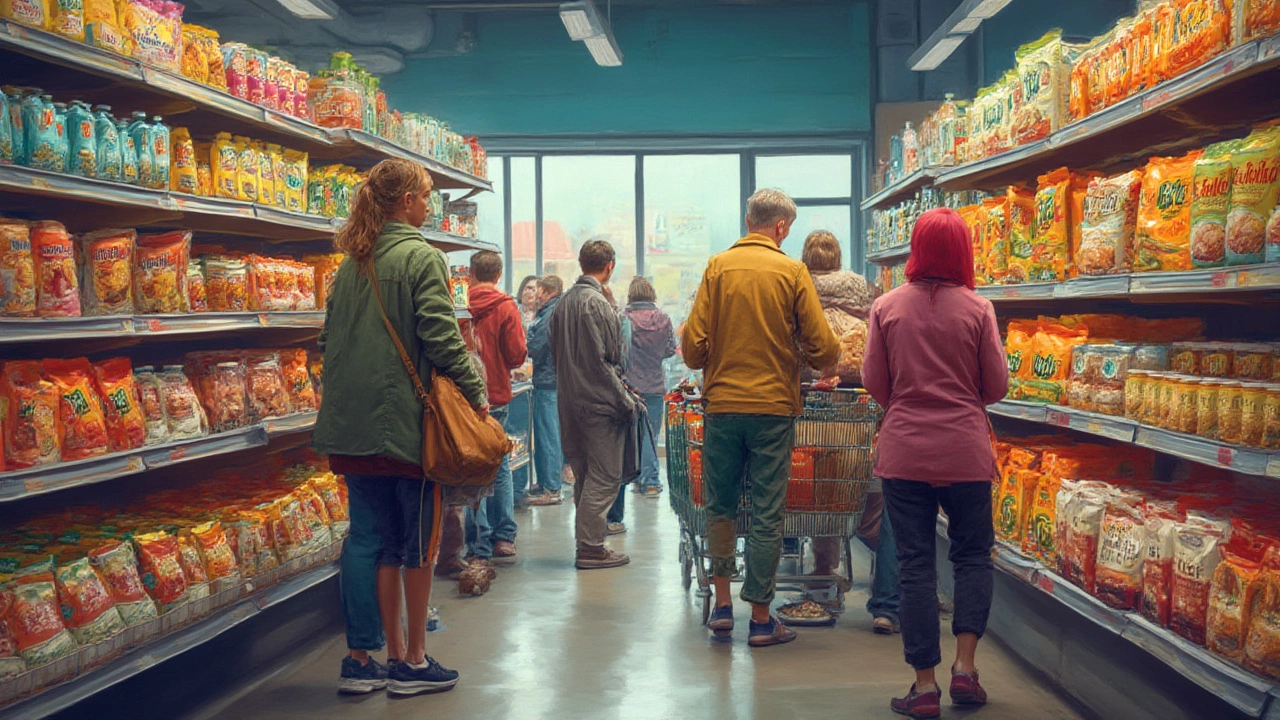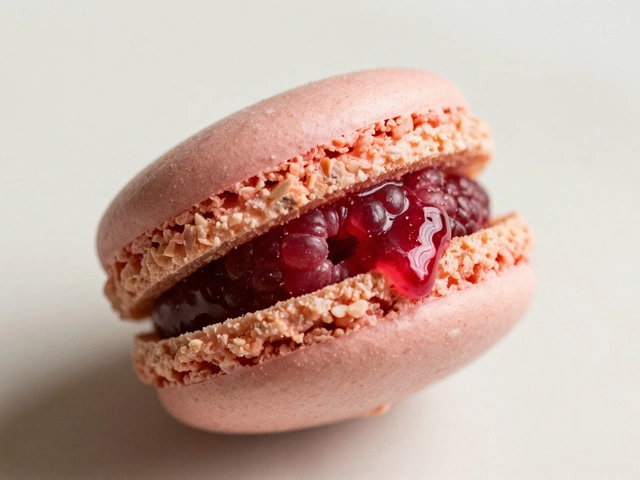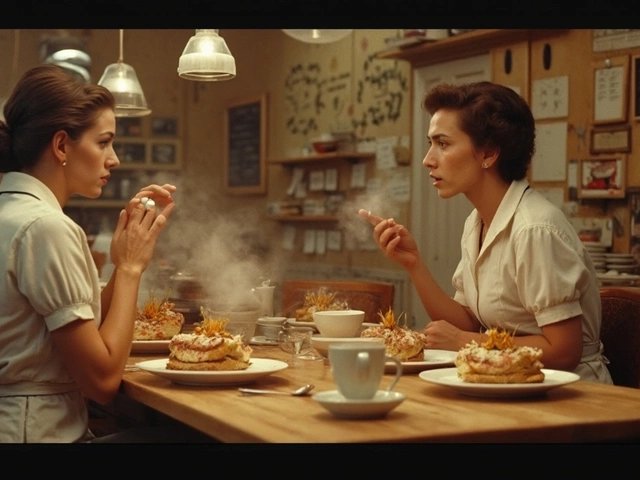Pop quiz: which of these foods contains gluten—rice, corn, potatoes, or quinoa? Here’s a twist: none of them do. Gluten is a sneaky little protein that gets blamed for a lot, and it’s led to panic at every bakery, cafe, and even my own kitchen, thanks to my ravenous cat Whiskers who once knocked a bag of flour off the counter. But while it’s easy to point fingers at bread and pasta, so many naturally gluten-free foods get overlooked. I’m not talking about foods labeled gluten-free, I mean foods you could be eating right now without worrying about gluten tagging along. So let’s dig past the obvious and uncover some genuinely surprising gluten-free eats hiding on your grocery list.
Understanding Gluten and Its Usual Hideouts
Okay—what even is gluten, and why does it matter? Gluten is a protein found in wheat, barley, and rye. If you’ve got celiac disease or are sensitive, even a crumb can make your gut rebel. That’s why gluten-free living is about meticulous label reading and sometimes avoiding communal toasters (I get the struggle). It’s not just bread and pasta that harbor gluten; this sneaky protein slithers its way into soy sauce, salad dressings, even beauty products and play dough.
Lots of the usual gluten suspects hang out in foods you’d probably expect: muffins, cookies, most cereals, and anything that tastes like a croissant. But here’s where things get interesting—so many foods get ruled out just because folks assume they’re packed with gluten. For example, french fries. Believe it or not, potatoes are 100% gluten free, but if they’re cooked in the same oil as chicken nuggets, boom—gluten cross-contamination. Chips can be a similar story. But once you start to demystify where gluten lives, the world of gluten-free options feels a whole lot less bleak.
Did you know most grains are actually gluten free? Rice—white, brown or wild—is fair game. So is corn, which technically gets called maize (sounds fancier, huh?). Buckwheat is another. Despite what its name suggests, it has nothing to do with wheat. Then there’s quinoa, amaranth, millet—even teff. Most of these are serious powerhouses, high in nutrients, and celiacs everywhere get to enjoy them with abandon.
If you dig into the numbers, according to the Celiac Disease Foundation, more than 1 in 100 people worldwide have celiac, but far more try to avoid gluten just because it makes them feel better. That’s led to a whole lot of gluten-related confusion. Labels pop up everywhere, sometimes on things that never had gluten in the first place—like bottled water (seriously).
To get this gluten thing under control, always check ingredients for the wheat family (including spelt, kamut, farro, semolina, and triticale). That part you probably know. But so many foods on the "forbidden list" are really off-limits only because they were handled wrong or crossed paths with wheat somewhere along the way.
Foods That Shock People by Being Gluten-Free
Alright, time for the best part—the actual eats that make you go, wait, really? First up, let’s go nuts. Literally. All plain nuts—almonds, walnuts, pecans, pistachios—are naturally gluten free. The problem is when they hang out with flavorings or dustings (barbecue flavor, honey-roasted…you know the drill), so always grab plain or check the label on flavored ones.
Popcorn gets the green light, too. It’s just corn, after all! Add a pinch of salt and a swirl of butter, and there’s not a speck of gluten. Buttery movie theater popcorn? Maybe. Always ask for ingredient info, since theater butter can be tricky.
Let’s talk about oats. Oats don’t have gluten, but oh boy, do they like to chill in factories with wheat. If you see certified gluten-free oats, you’re safe. Regular oats are a gamble. Speaking of breakfast, eggs in their purest form are always gluten free—that means scrambled, boiled, or fried in your own clean pan. And yogurt? As long as you go for plain with no "granola crumbles" or cookie mix-ins, it’s an easy win. Just watch out for hidden thickening agents or toppings.
Have a look at this table summarizing some major gluten-free foods people usually overlook:
| Food | Usually Gluten Free? | Things to Watch Out For |
|---|---|---|
| Rice (all kinds) | Yes | Canned/frozen dishes, instant flavors |
| Corn (and popcorn) | Yes | Seasonings, fryer oil |
| Buckwheat | Yes | Processed foods requiring label check |
| Quinoa | Yes | Preseasoned blends |
| Potatoes | Yes | French fries, seasonings |
| Eggs (plain) | Yes | Cross contact from pans |
| Plain Nuts | Yes | Flavored/dusted varieties |
| Fresh Fruits & Veggies | Yes | Packaged/prepared dips |
But then there are wildcards. Soybeans, tofu, and edamame? All gluten free, but beware the soy sauce trap—most commercial versions contain wheat. Tamari is your friend here; it’s often brewed without wheat. Olive oil and vinegar can also trip you up—not all vinegars are distilled from gluten-free grains. Plain unflavored seltzers: totally fine. Potato chips with no dustings or weird flavors: many major brands offer gluten-free options (my favorite Saturday snack!).
It’s easy to feel like everything is off-limits, but even chocolate is generally safe if you stick with the basics: pure dark, milk, or white chocolate. Skip the cookie bits or malt flavorings (which come from barley). And guess what—marshmallows are usually gluten free! No need to skip s’mores if you bring your own gluten-free graham crackers. Even licorice, which is usually a gluten landmine, has gluten-free versions these days.
Just remember, the simplicity of a food usually means it’s a safer bet. Single-ingredient or minimally processed things are easier to check. Canned beans, plain yogurt, cheese, all fruits and veggies, most fish and seafood—these are safe zones. The more a label reads like a chemistry experiment, the higher the chance gluten snuck in somewhere.

Hidden Traps: When Naturally Gluten-Free Isn’t Enough
I’ll be straight with you: eating gluten free is less about searching out unicorn foods and more about dodging the traps. Gluten sneaks into condiments, spice blends, juices, deli meats, and anything that claims to be “crispy.” Even those vegetarian meat analogues are lurking with wheat sometimes. Cross-contamination is the other big villain. A food that started gluten free can go rogue if it’s touched by a crumb on a cutting board or scooped by a floury hand.
If you’re eating out, ask questions. Is this cutlery clean? Was my omelet made on a wheat-free griddle? Don’t be shy about speaking up for yourself. Trust me, it gets easier the more you do it, and places are way more accommodating now.
Back to the grocery store: if you see “artificial flavors,” “modified food starch,” or “malt” on the label, park the package and dig deeper. Malt especially screams barley. Sauces and soups often use flour as a thickener. Frozen vegetables are usually safe, but any sauce or seasoning? Needs label detective work. Pre-shredded cheese and deli meat sometimes use flour to prevent clumping or sticking (weird but true).
If all of this leaves you feeling overwhelmed, you’re not alone. According to the Beyond Celiac foundation, “The learning curve is steep, but keep reading labels and you’ll build confidence quickly.”
"The best way to avoid accidental gluten ingestion is to educate yourself about food labels and never assume," says Dr. Alessio Fasano, director of the Center for Celiac Research at Massachusetts General Hospital.
Restaurant meals are perhaps the land of the unexpected. Salads? Great, unless there are croutons or the chef sprinkled flour to add “texture” to the dressing. Grilled chicken? Fine, but not if it was marinated in soy sauce containing wheat. Even cocktails can trip you up anywhere malt or grain-based spirits are involved. Wines and distilled spirits are typically gluten free; beers and malt beverages are not, unless given the proper gluten-free stamp.
I once had a "gluten-free" muffin at a cafe only to find out the baker used regular flour by mistake. It's a wild world out there, but the payoff is huge when you find truly safe comfort foods. Keep an eye on the fine print and you’ll be golden.
Tips for Navigating Surprise Gluten-Free Finds
Since nobody can remember every hidden gluten booby trap out there, here are my go-to hacks whenever I’m shopping, cooking, or hunting for snacks. Start basic—shopping the outer rim of your grocery store (produce, dairy, meat) means you naturally run into fewer gluten sources. For packaged foods, look for that “Certified Gluten Free” logo or at least check for a gluten declaration. Bonus tip: the less processed the food, the more likely it’s gluten free.
If you’re craving a snack, popcorn or roasted chickpeas are easy wins. My friend Mel swears by roasted edamame. A bowl of plain Greek yogurt swirled with honey and berries makes a sweet breakfast that never needs any grains to make it yummy.
For eating out, learn which cuisines have more naturally gluten-free options—the obvious ones are Mexican (corn tortillas!), Indian (rice, lentils, chickpea flour breads), and Thai (rice noodles galore). And yes, you can still have pizza night: loads of places offer gluten-free crusts, but ask about shared surfaces.
Meal prepping? Cook up gluten-free grains like millet or quinoa, and pair with beans, roasted veggies, or grilled chicken. Make extras and freeze for days when gluten sneaks up on you and you need a safe fallback.
Here’s a handy list for your kitchen that Whiskers can’t knock off the counter:
- Plain rice and polenta
- Quinoa and buckwheat groats
- All fresh fruits and veggies
- Plain nuts, seeds, and nut butters
- Eggs and all basic dairy (milk, cheese, plain yogurt)
- Fresh chicken, beef, pork, and fish
- Canned tuna, beans (read labels just in case)
- Olive oil, coconut oil, and pure vinegars
- Chocolate labeled gluten free or plain varieties
- Gluten-free labeled tortillas and breads
I’ll leave you with this: it’s not about deprivation, it’s about discovery. Gluten-free eating might seem like a minefield, but there’s a whole world of fresh, delicious possibilities when you stop focusing on what you “can’t” eat and start marveling at all the stuff you can. The next time someone says, “Isn’t eating gluten free so hard?” you can smile—and tell them about the secret stash of marshmallows in your pantry. Enjoy the hunt, trust your gut (literally and figuratively), and remember—unexpected gluten-free treasures are everywhere.





